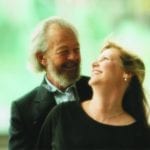The elucidation of the Heisenberg uncertainty principle was pivotal in its discovery that consciousness itself has a profound effect on the submicroscopic substratum of the observable, measurable universe. Intention itself became recognized as instrumental to the appearance of events.
Rupert Sheldrake (Sheldrake,1981) formulated the principle that form occurs first within the field of consciousness, so that ‘morphogenic’ patterns plus intention are essential to activating potentiality into actuality. Current string theory postulates that the ultimate substratum of all that exists in the universe consists of a universal energy, so all that can be said to exist arises out of a common substrate. The possibility of the transformation from potentiality to actuality is provided by the infinite power of the primordial substrate of all existence…
The universe is now defined as an interactive wholeness of myriad energy fields of infinite, potentially differing frequencies merely awaiting the influence of the introduction of intention plus form. Thus, we now have a means by which to describe and understand the easily identifiable principle that Creation and Evolution are actually one and the same process…

